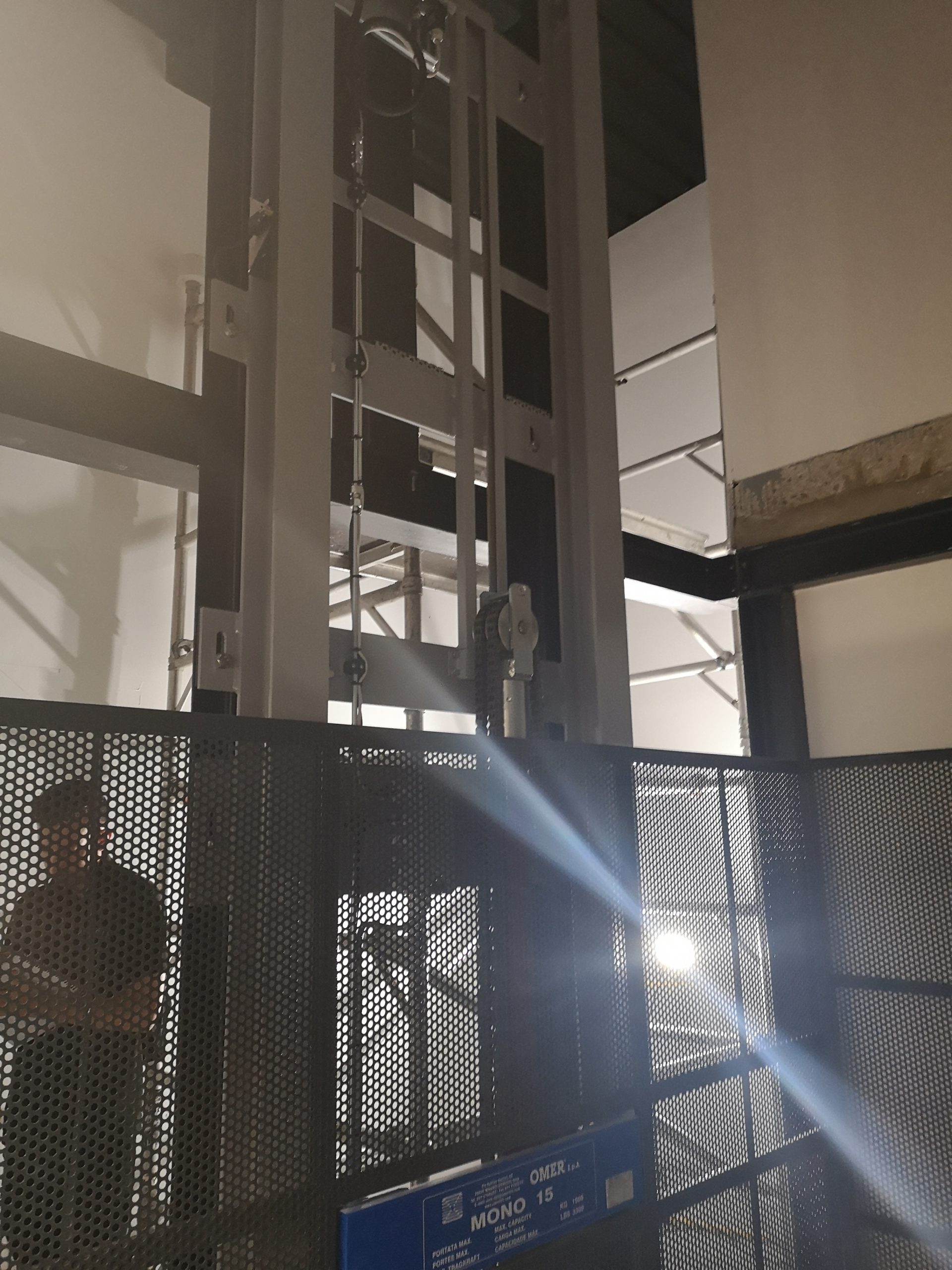The installation of vertical lift solutions in new buildings or during the refurbishment of older structures is a time consuming and costly endeavour. A new concept in installing or replacing lifts is the scaffold-less installation method.
Passenger or goods lifts run on several rails mounted on each side of a vertical shaft. These rails serve to guide, locate and provide emergency braking for the lift car. Traditionally the installation of these rails has involved the building of a scaffolding structure inside a vertical shaft to provide a working platform for the installation technicians. Apart from cost, the assembly process is time-consuming, restricts the working space of the technicians and has workplace safety implications.
The scaffold-less installation method involves using a temporary working platform during the installation process. This may include the use of a “false car” as a platform or even the use of a suitably protected new lift cabin as a base for technicians to work from.

There are a number of different methods for installing lifts without scaffolding, two popular options are:
The false car is an adjustable platform built of lightweight, high-strength aluminium for ease of handling and installation. The design allows for a wide range of distances between guides and depth dimensions allowing it to fit in virtually all lift shafts and to accommodate all rail sizes. The operating controls and braking systems meet stringent safety requirements. A frame with a protective canopy is mounted on the platform that shields technicians from falling objects within the lift shaft during the assembly process. The crash deck installed at the top of the shaft provides a further level of protection.
In this method, the basic skeleton of the new lift cabin is constructed in the pit of the lift shaft. After this, an initial section of guide rails is fitted to the sides of the lift shaft. The structure is carefully protected from damage as technicians work from the roof of the cabin while installing new guide rails above the cabin. As new guide rail sections are installed the lift cabin is slowly winched up the shaft by the wire rope climber or hoist.
An obvious benefit from this method is that the installation and removal of the false car is avoided together with associated costs and time.
Installing a lift without scaffolding reduces installation times and offers considerable associated cost savings. An added benefit is that there no scaffolding operating height constraints.